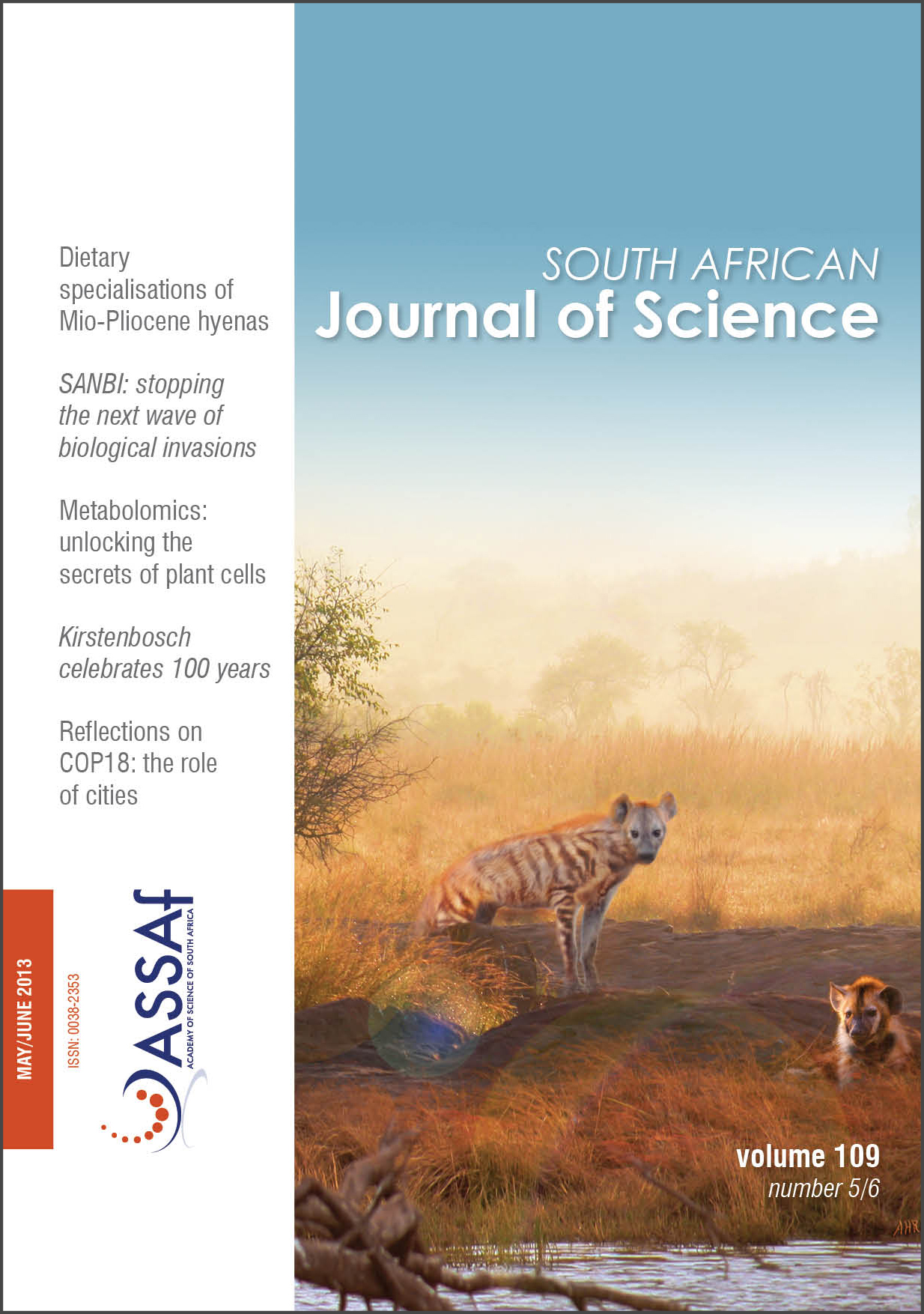Plant metabolomics: A new frontier in phytochemical analysis
DOI:
https://doi.org/10.1590/sajs.2013/20120005Keywords:
chromatography, mass spectrometry, metabolite profiling, multivariate data analysis, nuclear magnetic resonanceAbstract
The primary and secondary metabolites found in plant cells are the final recipients of biological information flow. In turn, their levels can influence gene expression and protein stability. Qualitative and quantitative measurements of these metabolites reflect the cellular state under defined conditions, and yield critical insights into the cellular processes that control the biochemical phenotype of the cell, tissue or whole organism. Metabolomics differs from traditional targeted phytochemical analysis in various fundamental aspects; for example, it is a data-driven approach with predictive power that aims to assess all measurable metabolites without any pre-conception or pre-selection. As such, metabolomics is providing new dimensions in the study of systems biology, enabling the in-depth understanding of the intra- and extracellular interactions of plant cells. Metabolomics is also developing into a valuable tool that can be used to monitor and assess gene function, and to characterise post-genomic processes from a broad perspective. Here, we give an overview of the fundamental analytical technologies and subsequent multivariate data analyses involved in plant metabolomics as a research tool to study various aspects of plant biology.
Published
Issue
Section
License

All articles are published under a Creative Commons Attribution 4.0 International Licence
Copyright is retained by the authors. Readers are welcome to reproduce, share and adapt the content without permission provided the source is attributed.
Disclaimer: The publisher and editors accept no responsibility for statements made by the authors
How to Cite
- Abstract 1632
- PDF 1278
- EPUB 231
- XML 271













.png)